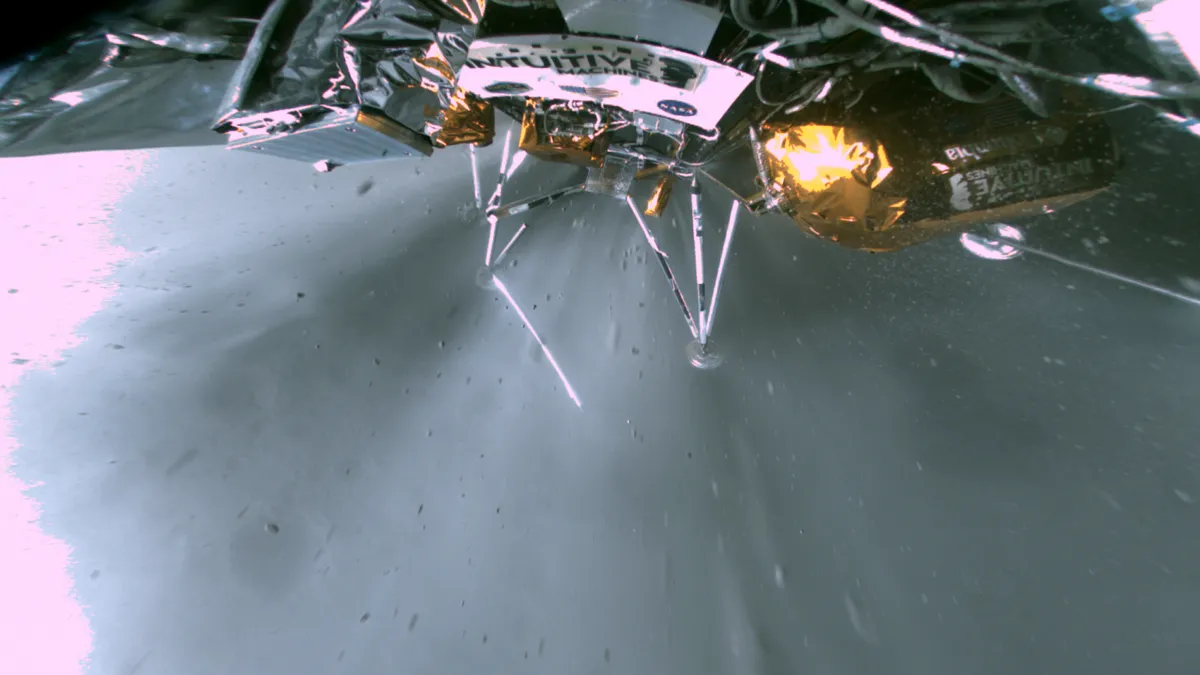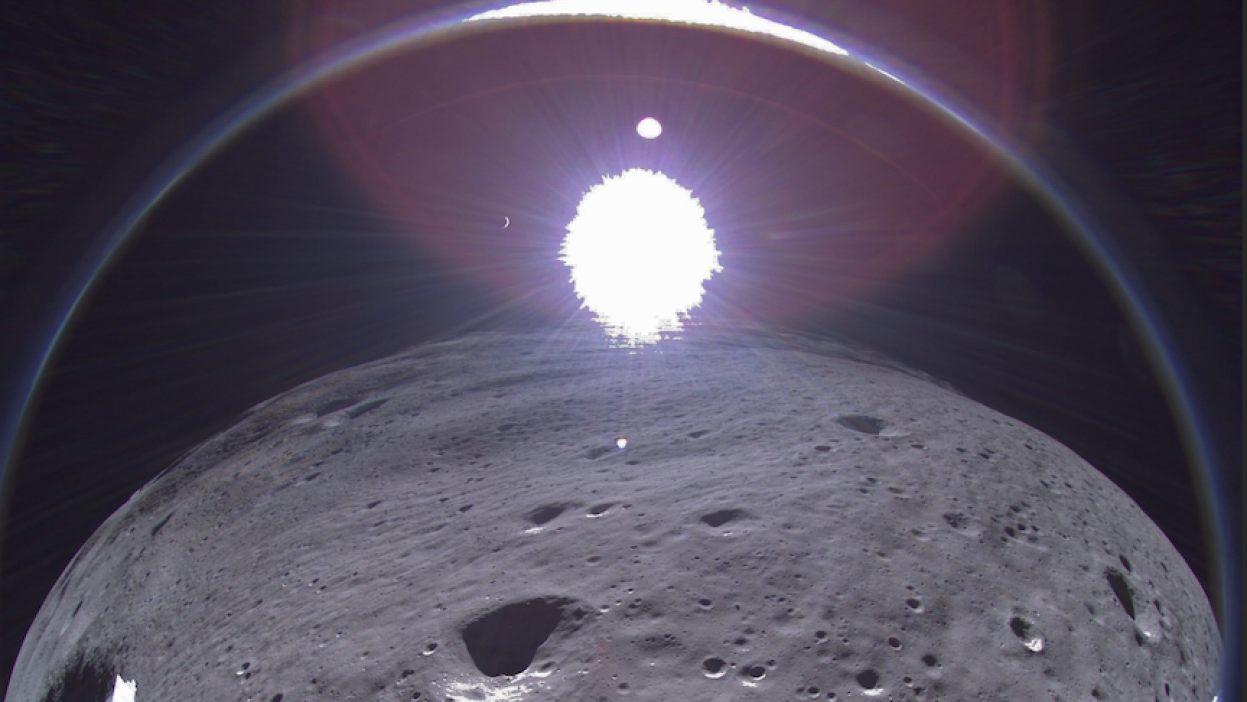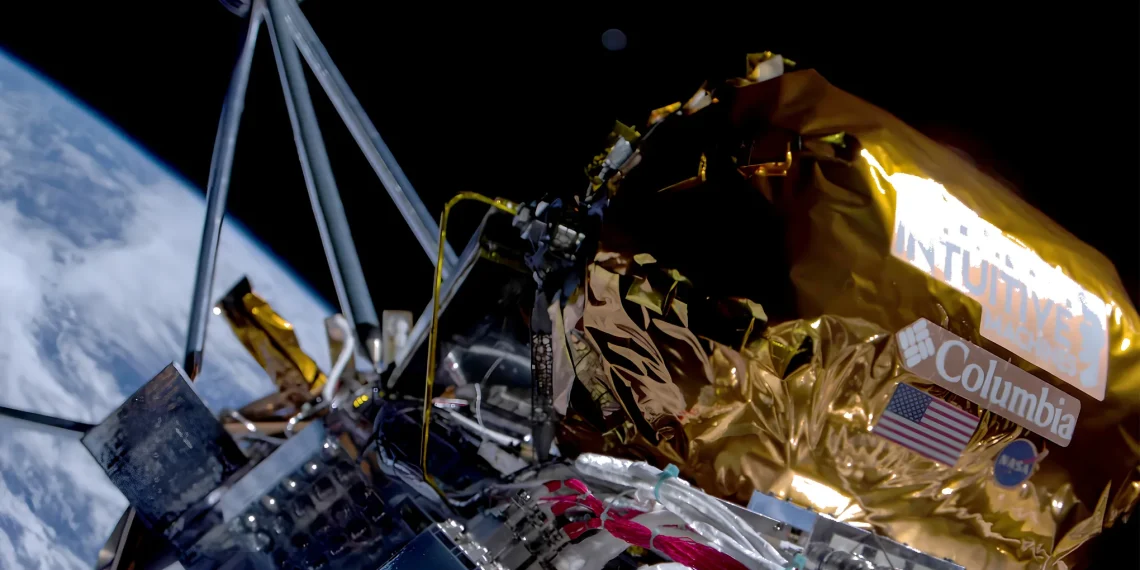The Odysseus lander, developed by Houston-based company Intuitive Machines, recently made history by becoming the first U.S. spacecraft to land on the moon in five decades.
However, its journey faced hurdles right from the start. Initially, a malfunction with the craft’s landing lasers compelled it to resort to a backup, and upon touchdown, one of its six legs snapped, causing it to topple and collide with a rock.
Despite these setbacks, Odysseus managed to send back a final image to Earth before it powered down for the impending lunar night. The image, captured on February 22nd, featured the crescent Earth in the background, serving as a poignant reminder of humanity’s presence beyond our planet.

As the lunar night approached, flight controllers made the decision to shut down the lander to conserve power during the prolonged period of darkness and extreme cold. The fate of the spacecraft remains uncertain, as without sunlight to recharge its solar panels, there is no guarantee it will reactivate once the lunar day returns.
Intuitive Machines’ CEO, Steve Altemus, expressed hope of reviving Odysseus when the sun shines upon it again in approximately three weeks. Despite the challenges faced by the mission, Altemus remains optimistic about the prospect of reestablishing communication with the lander.
Launched atop a SpaceX Falcon 9 rocket from NASA’s Kennedy Space Center, Odysseus entered lunar orbit before embarking on its historic landing near the Malapert A crater at the moon’s south pole.

This region is of particular interest to scientists due to the presence of water ice, which holds potential for future exploration and utilization in space missions.
The Odysseus mission forms part of NASA’s Commercial Lunar Payload Services program, aimed at fostering collaboration with private-sector entities for lunar exploration endeavors.
Through partnerships with companies like Intuitive Machines, NASA aims to advance scientific research and expand human presence beyond Earth’s orbit.




